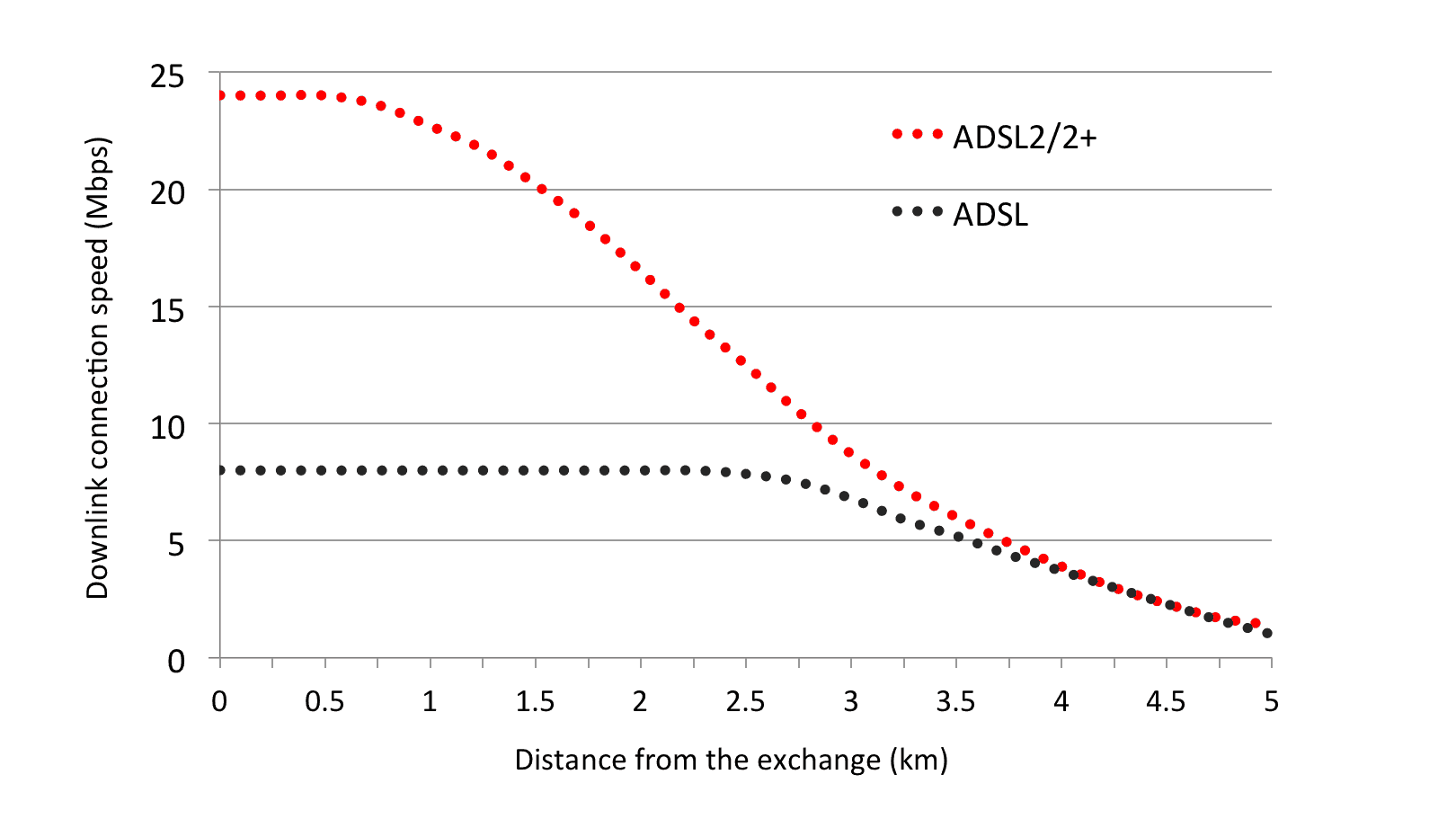Not all broadband services and ISPs are the same. Choosing the right (fastest) service is generally much more important than choosing between ISPs. While higher-speed superfast broadband is available to 95% of premises, many users do not realise. Selecting a good ISP will ensure that you maximise your broadband speeds and stand the best possible chance of fixing any faults that you have (or may have in the future) on your line.
Your choices depend on your location
The broadband choices available to you will depend on where you are located. In general, if you live in a town or city, you will have more choices available to you than if you live in a rural location. The following broadband services may be available to you in your location, ranked in terms of broadband speed:
- ultrafast broadband (with download speeds over 100 Mbps), delivered using Fibre-to-the-Premises (FTTP), cable (e.g. Virgin) or G.fast.
- superfast broadband services (with download speeds between 30 Mbps and 80 Mbps), delivered by BT’s latest fibre-optic broadband network – available from BT Broadband and other ISPs
- basic broadband (ADSL and ADSL2+) services delivered by BT’s network and offered by BT Broadband and other ISPs
- basic broadband Local Loop Unbundled (LLU) services using ADSL2+, offered by a range of providers (such as Sky and TalkTalk) and smaller ISPs
Despite the fact that superfast broadband is available to about 95% of premises, many people are unaware that the latest (and fastest) broadband services are now available to them.
The availability of superfast broadband services is increasing rapidly, delivering download speeds up to 80 Mbps
Superfast broadband services offer download speeds above 30 Mbps. If superfast broadband is available in your area, we strongly recommend that you opt for this as a minimum. Government and public funding has been used to expand BT’s fibre broadband footprint to about 95% of premises.
As described in our What is Fibre Broadband page, BT’s Fibre to the Cabinet (FTTC) service delivers download speeds of up to about 80 Mbps (with upload speeds up to about 20 Mbps).
The price for superfast broadband may be substantially lower than you may think. Ofcom has found that the difference between the monthly rental fees for ISPs’ lowest-cost ‘superfast’ services and their lowest-cost ‘current generation’ services is often relatively modest. Currently, there are many offers to tempt consumers to fibre broadband. Particularly if you are prepared to change ISP, you may find that you will pay less with a new ISP for fibre broadband than you do now for conventional broadband!
ADSL2+ can provide significantly greater speeds than ADSL
In the absence of superfast broadband services, you will generally be reliant upon ADSL technology (or the more modern ADSL2+ technology) for the delivery of your broadband service, with a large range of ISP options.
ADSL2+ is an enhancement to the original ADSL technology that is widely in use. As discussed in our Chart of ADSL and ADSL2+ speed versus distance page, ADSL2+ can deliver significantly higher download speeds than basic ADSL, particularly if you are located relatively close to your local telephone exchange.

Chart of ADSL2/2+ and ADSL connection speed against distance from the exchange
Local Loop Unbundling is the process whereby other operators (such as Sky Broadband and TalkTalk) place their own equipment in BT exchanges so that they can offer their own services with more control. LLU services use ADSL2+ technology. Providers such as Sky Broadband and TalkTalk offer competitively-priced services bundling telephone, broadband and TV.
Don’t forget to read our Increase Broadband Speed Guide to get the very highest speed from your broadband connection. Our WiFi Optimisation Guide will ensure that WiFi will not become the bottleneck of your connection.
